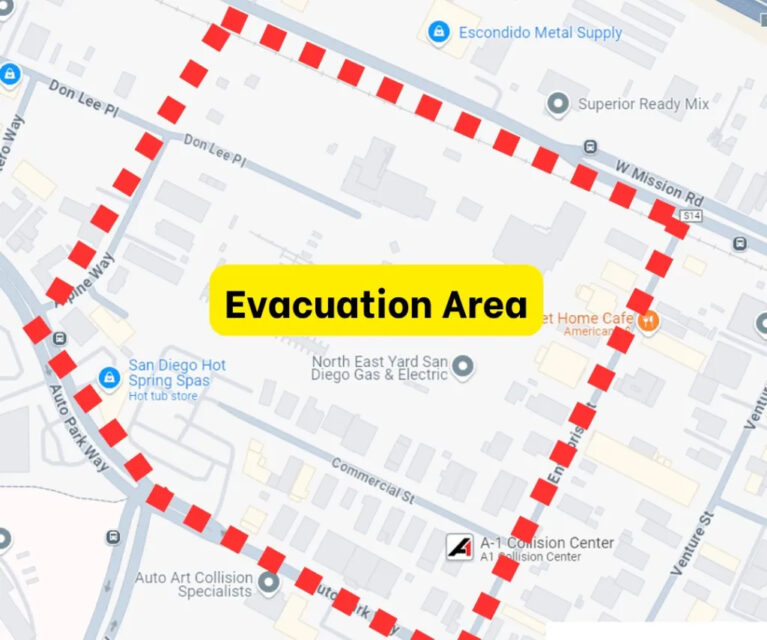A fire ignited in one of the 24 lithium-ion battery storage containers at the 30MW San Diego Gas and Electric facility, in Escondido, California on 5 September, causing the local fire department to issue a precautionary evacuation order for the nearby district. It affected about 500 businesses. Three schools, although not directly in the area, chose to also close, as a precautionary measure.
By the next day, most of the fire was out. Firefighters limited the fire to the one container, by dousing the neighbouring units with water, and let the offending unit burn itself out – as is now standard practice.
Although there was a lot of smoke, the fire chief Tyler Batson indicated that their atmospheric monitoring showed no readings of toxic fumes beyond what would be generated by an ordinary house or car fire. According to Batson, crews would remain on scene until the flames subside. “What I’ve been told by SDG&E is that, best case, this fire burns itself out in about 12 hours, worst case, about 48 hours,” Batson told reporters.
Local groups have reacted by renewing their objections to construction of new facilities nearby. There has been a call to pause the construction of new lithium BESS in residential neighbourhoods until more stringent building and safety procedures have been introduced. Communities continue to be concerned about the chemical and particulate releases into the air and the water, including in the runoff water used to extinguish a fire.
This is a difficulty faced in many areas. The push to install energy storage facilities to pair with renewables to meet climate targets falls foul of communities’ genuine concerns over appropriate safety levels.
Update on air quality from Enterprise fire – 6 September
While emergency crews have been responding to the incident at the SDG&E Battery Storage facility, the Escondido Fire Department, San Diego County Hazardous Materials Division, the San Diego County Health Department and SDG&E officials have been closely monitoring the air quality.
- Air quality measurements are checked with six standards
- The team ensured continuous air quality monitoring from the start of this incident
- Levels have been measured in real-time, and appropriate reporting followed
- Testing has been performed in the area of the fire and locations one mile away in prevailing wind
- All air quality readings have been within normal OSHA ratings since the start of the incident.












